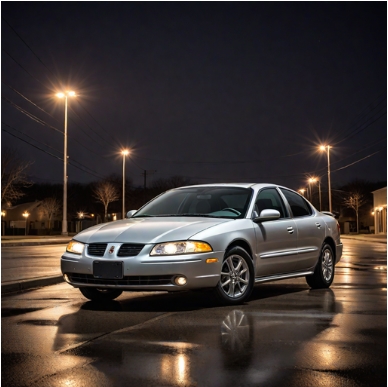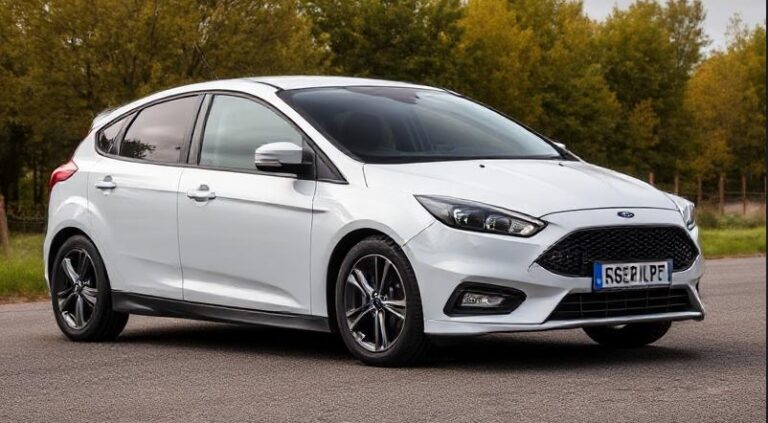The Evolution of the Buick Rainier
The Buick Rainier represents a significant chapter in General Motors’ luxury SUV lineup, blending American craftsmanship with a focus on comfort, versatility, and refined driving experience. Produced from 2004 to 2007, the Rainier was Buick’s first full-size SUV designed specifically for the North American market, aiming to compete with other luxury SUVs such as the Acura MDX, Lexus RX, and Lincoln Aviator. Over its brief production run, the Rainier underwent various updates, trim level offerings, and feature enhancements, reflecting both market trends and Buick’s brand evolution.
Introduction and Development
The Buick Rainier was introduced in 2004 as a 2004 model year vehicle, marking Buick’s return to the SUV segment after a hiatus. The vehicle was built on the GMT360 platform, shared with other GM SUVs such as the Chevrolet TrailBlazer, GMC Envoy, and Isuzu Ascender. It was designed to provide a luxurious, comfortable alternative in the mid-size SUV market, emphasizing quietness, ride quality, and upscale appointments.
The development of the Rainier was driven by GM’s desire to expand Buick’s global presence and appeal to a broader, more upscale demographic. The model was engineered to cater to customers seeking a premium SUV experience, with Buick’s signature emphasis on smoothness and quietness.
Production Years and Model Lifecycle
2004–2007:
The Buick Rainier was produced over four model years, with its production ending in late 2007, primarily due to shifting market preferences and the phasing out of the GMT360 platform in favor of newer, more modern architectures.
Discontinuation:
In 2007, GM announced the discontinuation of the Rainier, with the 2007 models being the final production year. The discontinuation was also influenced by declining sales and the company’s strategic move toward more crossover-oriented vehicles.
Model and Trim Levels Overview
Throughout its production, the Buick Rainier was offered in a limited number of trims, mainly tailored to different levels of luxury, equipment, and features.
2004 Model Year
- Base: The entry-level model offered essential features with a focus on comfort and utility.
- CXL: The more upscale trim, adding luxury features, upgraded interior materials, and additional standard equipment.
- CXL Plus: The top-tier trim, introduced later in the model year, featuring premium amenities, optional packages, and advanced features.
2005 Model Year
- The trim levels remained largely consistent with 2004 but saw some feature enhancements and the addition of optional packages to increase customization.
2006 Model Year
- Minor updates to standard equipment and options, along with the introduction of new packages aimed at enhancing luxury and convenience.
2007 Model Year
- The final year saw the continuation of existing trims with minor feature adjustments; no significant redesign or new trim levels were introduced.
Engine Options and Performance
The Buick Rainier was powered exclusively by a 4.2-liter inline-six engine (the GM Atlas I6), known for its smoothness and reliability. This engine produced approximately 275 horsepower and 275 lb-ft of torque, mated to either a four-speed automatic transmission or a five-speed automatic in later years.
Optional on some trims was a 5.3-liter V8 engine, offering increased power and towing capacity:
- 5.3L V8: Produced around 290 horsepower and 325 lb-ft of torque, available primarily on higher trims or as part of optional packages.
The SUV was offered with either rear-wheel drive (RWD) or all-wheel drive (AWD), with AWD being more common in the luxury-focused trims.
Exterior and Interior Features
The Buick Rainier’s exterior design was characterized by a refined, understated look, with smooth lines, a prominent grille, and Buick’s signature styling cues. Throughout its production, it maintained a consistent shape, with some updates to grille design and lighting elements.
Inside, the Rainier emphasized comfort and quietness, featuring:
- Leather upholstery (standard on higher trims)
- Power-adjustable seats
- Dual-zone climate control
- Premium audio systems
- Heated front seats
- Wood trim accents (on higher trims)
The vehicle also incorporated modern safety features such as anti-lock brakes, stability control, traction control, side-curtain airbags, and a tire pressure monitoring system, especially in later model years.
Notable Features and Packages
Over its run, the Rainier offered various packages to enhance luxury, convenience, and safety:
- Premium Package: Included leather seats, upgraded audio, and additional interior trims.
- Navigation System: Available as an option, especially in the CXL Plus trim.
- Sunroof/Moonroof: A popular option on higher trims.
- Trailer Towing Package: Boosted towing capacity, especially with V8 options.
- Rear-seat Entertainment: Some models offered rear-seat DVD entertainment systems.
Market Position and Competition
The Buick Rainier was positioned as a luxury SUV that prioritized comfort and refinement over off-road capability. It was aimed at families and professionals seeking a premium vehicle with ample space, comfort, and a smooth ride.
Its primary competitors included:
- Acura MDX
- Lexus RX (particularly the RX 330 and RX 350)
- Lincoln Aviator
- Volvo XC90
- Infiniti FX
While the Rainier offered a more traditional, conservative luxury experience aligned with Buick’s brand image, it faced stiff competition from more modern, crossover-oriented vehicles that emphasized agility and fuel efficiency.
.
We LOVE cars & cruising around, but sometimes day trips to explore new cities are required (with family or friends) for a spice of variety in your life!
So GO explore!
Cruises & Day/Night City Tours to: Baltimore, Boston, Chicago, Marina Del Ray, New York, Niagara, Philadelphia, San Diego, San Francisco, Toronto, Washington DC, etc.:

.
Changes and Updates Over the Years
2004–2007 saw relatively minimal changes in the Buick Rainier, reflecting its short production cycle. However, some notable updates included:
- 2005: Introduction of new standard safety features; minor interior improvements.
- 2006: Addition of new optional packages; slight exterior styling updates such as new wheel designs.
- 2007: Final model year with minor feature adjustments; no major redesigns.
In 2007, GM announced the end of the Rainier’s production, signaling a shift toward crossover SUVs and the consolidation of its SUV lineup under more modern architectures like the GMT K2XX platform used for newer models.
Legacy and Impact
Although the Buick Rainier had a relatively brief lifespan, it played a crucial role in expanding Buick’s SUV offerings and establishing the brand in the luxury SUV segment. Its emphasis on quietness and ride quality exemplified Buick’s core strengths.
The Rainier’s discontinuation did not mark the end of Buick’s SUV ambitions; instead, it paved the way for newer models like the Enclave, which would later become Buick’s flagship crossover SUV, emphasizing modern styling, advanced technology, and improved efficiency.
Conclusion
The Buick Rainier stands as a noteworthy chapter in the history of GM’s luxury SUVs, representing Buick’s efforts to carve out a niche in the competitive mid-size SUV market during the early 2000s. Produced from 2004 to 2007, it offered a range of trims and features aimed at delivering a comfortable, refined driving experience. While its production was relatively short-lived, the Rainier contributed to Buick’s evolution, setting the stage for future crossover success.
Today, the Rainier remains a sought-after vehicle among enthusiasts who appreciate its classic Buick styling, reliable performance, and the unique blend of luxury and utility that defined its brief but impactful presence on the road.







